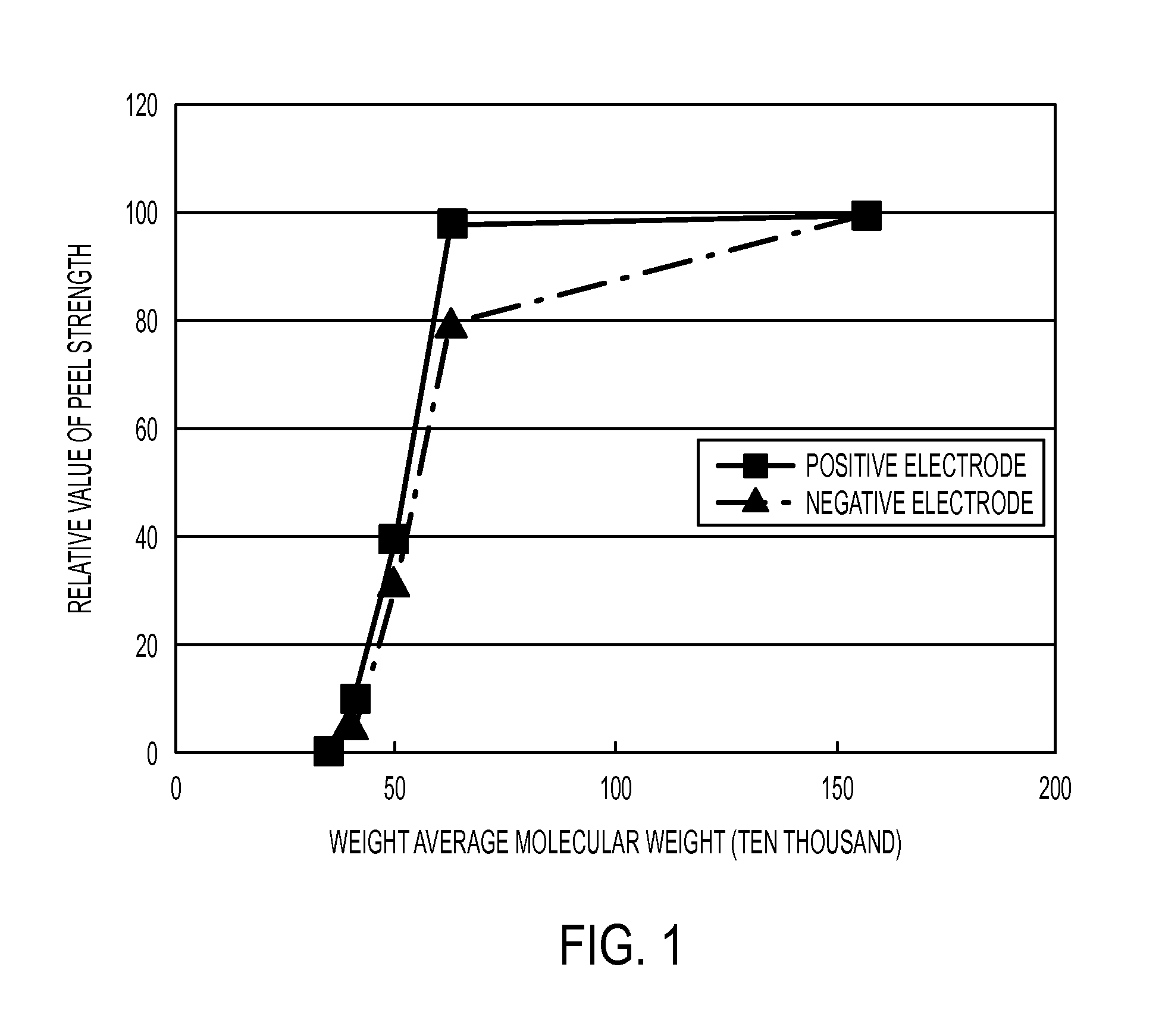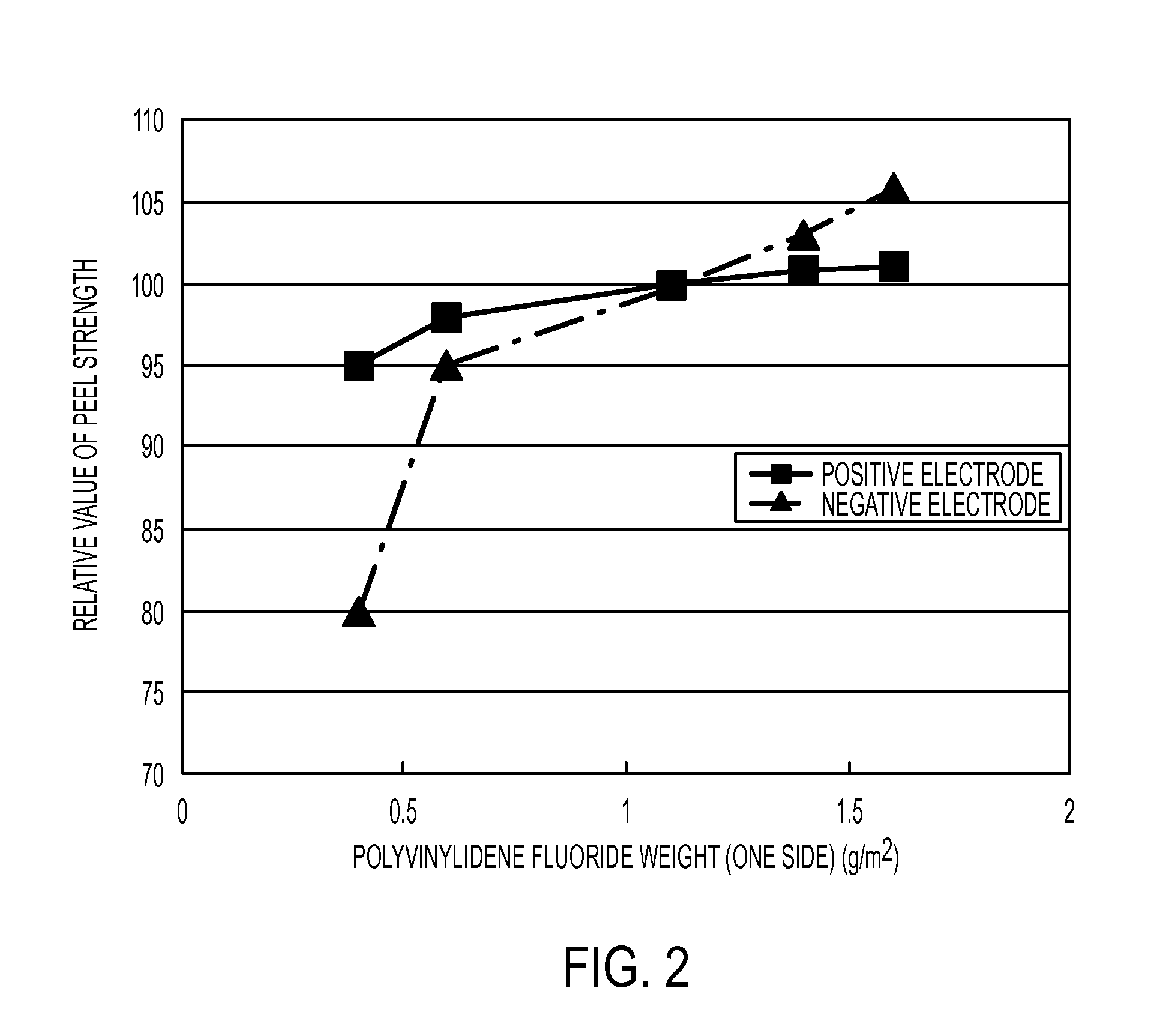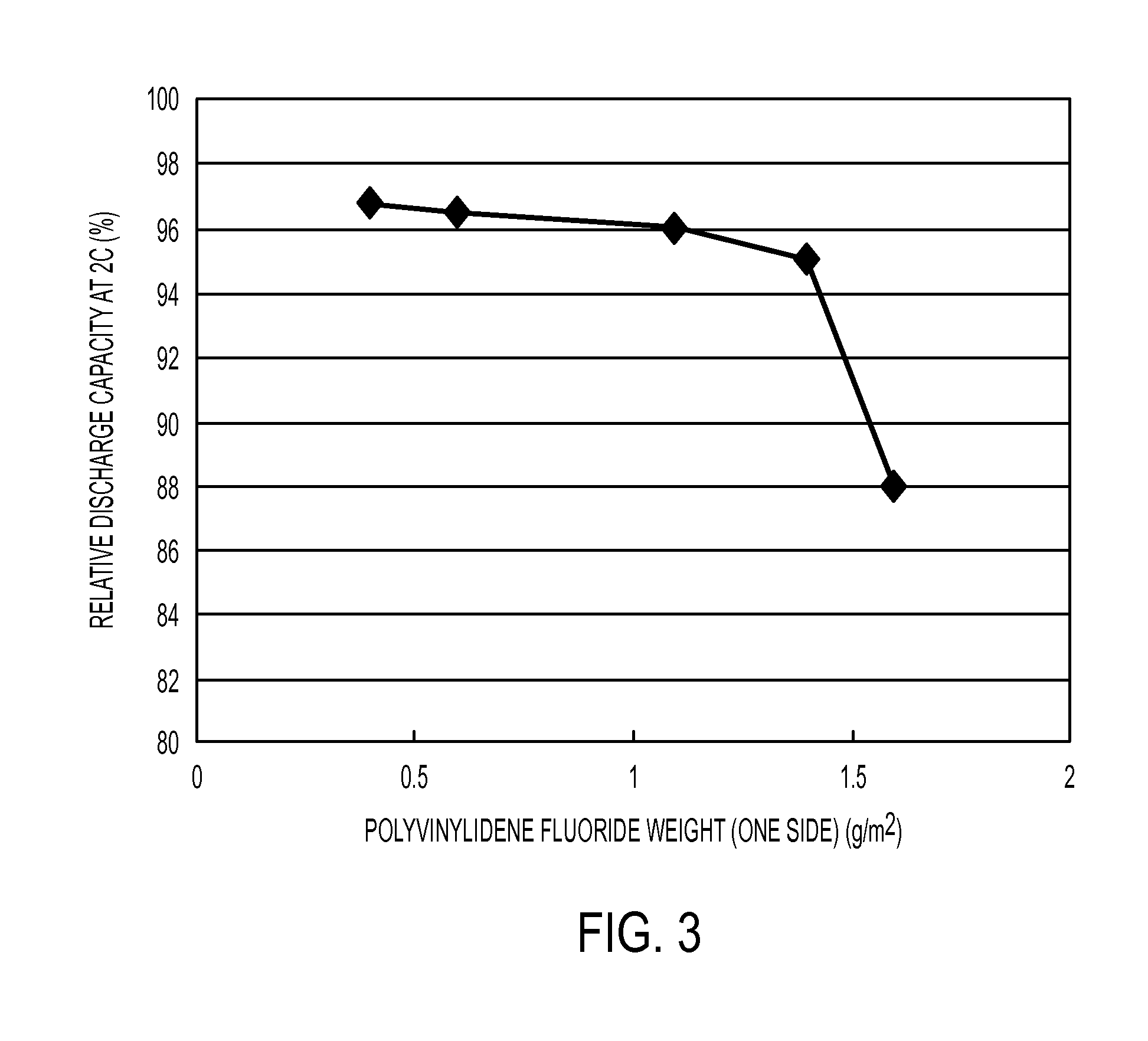Separator for nonaqueous secondary battery, and nonaqueous secondary battery
a secondary battery and separator technology, applied in the direction of non-aqueous electrolyte accumulators, cell components, electrical apparatus, etc., can solve the problems of reducing the life of the cycle, and achieve the effect of sufficient ion permeability and better adhesion to the electrod
- Summary
- Abstract
- Description
- Claims
- Application Information
AI Technical Summary
Benefits of technology
Problems solved by technology
Method used
Image
Examples
example 1
[0062]Polyvinylidene fluoride having a weight average molecular weight of 1,570,000 (KF polymer W#7300, manufactured by Kureha Kagaku Kogyo) was used as a polyvinylidene-fluoride-based resin. The polyvinylidene fluoride was dissolved in a mixed solvent containing dimethylacetamide / tripropylene glycol in a weight ratio of 7 / 3 at a concentration of 5 wt % to prepare a coating liquid. Equal amounts of the coating liquid were applied respectively to both sides of a polyethylene microporous membrane (TN0901, manufactured by SK) having a thickness of 9 μm, a Gurley value of 160 sec / 100 cc, and a porosity of 43%, followed by immersion in a coagulation liquid (40° C.) containing water / dimethylacetamide / tripropylene glycol in a weight ratio of 57 / 30 / 13 to solidify the polymer. The microporous membrane was then washed with water, followed by drying to give a separator for a nonaqueous secondary battery according to the invention having a porous layer made of a polyvinylidene-fluoride-based re...
example 2
[0063]A separator for a nonaqueous secondary battery according to the invention was obtained in the same manner as in Example 1, except that polyvinylidene fluoride having a weight average molecular weight of 630,000 (KF polymer W#7200, manufactured by Kureha Kagaku Kogyo) was used as a polyvinylidene-fluoride-based resin.
example 3
[0064]Polyvinylidene fluoride having a weight average molecular weight of 1,570,000 (KF polymer W#7300, manufactured by Kureha Kagaku Kogyo) was used as a polyvinylidene-fluoride-based resin. The polyvinylidene fluoride was dissolved in NMP at 5 wt %, and further, as an inorganic solid filler, Al2O3 (AL160SG-3, manufactured by Showa Denko) was dispersed therein in an amount equal in weight to the polyvinylidene fluoride resin, thereby preparing a coating liquid. Equal amounts of the coating liquid were applied respectively to both sides of a polyethylene microporous membrane (TN0901, manufactured by SK) having a thickness of 9 μm, a Gurley value of 160 sec / 100 cc, and a porosity of 43%, followed by vacuum drying at 100° C. for 12 hours to give a separator for a nonaqueous secondary battery according to the invention.
PUM
| Property | Measurement | Unit |
|---|---|---|
| porosity | aaaaa | aaaaa |
| porosity | aaaaa | aaaaa |
| Gurley value | aaaaa | aaaaa |
Abstract
Description
Claims
Application Information
 Login to View More
Login to View More - R&D
- Intellectual Property
- Life Sciences
- Materials
- Tech Scout
- Unparalleled Data Quality
- Higher Quality Content
- 60% Fewer Hallucinations
Browse by: Latest US Patents, China's latest patents, Technical Efficacy Thesaurus, Application Domain, Technology Topic, Popular Technical Reports.
© 2025 PatSnap. All rights reserved.Legal|Privacy policy|Modern Slavery Act Transparency Statement|Sitemap|About US| Contact US: help@patsnap.com



